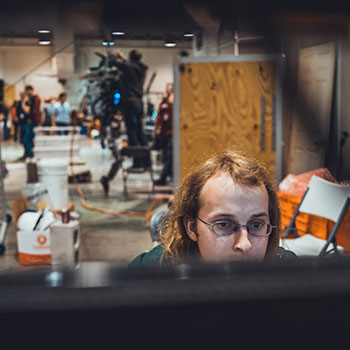MIT Team Places Sixth at International DARPA Robotics Challenge
CSAIL team just misses winning the grand prize after programming a 400-lb humanoid robot to lift beams, climb stairs, and drive a car.
Video and photo by Lillie Paquette; Written by Adam Conner-SimonsAfter three years, two months, and 650,000 lines of code, a team of researchers from MIT’s Computer Science and Artificial Intelligence Lab (CSAIL) stood proudly with their humanoid robot in a sporting arena surrounded by thousands of spectators. They were just one step away from winning the $2 million grand prize at an international competition that many have been calling “the Robot Olympics.”
Granted, that last step was a rather large one: getting a 6’2’’, 400-pound humanoid robot to open a door, rotate a valve, turn on a power tool, drill a hole in a wall, climb stairs, scramble over cinder blocks, and drive a car — all in the space of an hour.
“This is, without a doubt, the most ambitious project that any of us have ever undertaken,” says Professor Russ Tedrake, the CSAIL principal investigator who led the team’s efforts at the DARPA Robotics Challenge (DRC) finals, which took place June 5-6 at the Fairplex in Pomona, California. “From perception to motion-planning to manipulation, the breadth and depth of challenges have forced us to think creatively, program nimbly — and sleep sporadically.”
The CSAIL team finished mere inches away from winning the competition, ultimately earning sixth place out of 25 teams. The Pentagon-sponsored event was aimed at developing mobile robots to perform useful tasks in disaster-relief situations, and was inspired by the 2011 Fukushima nuclear disaster.
